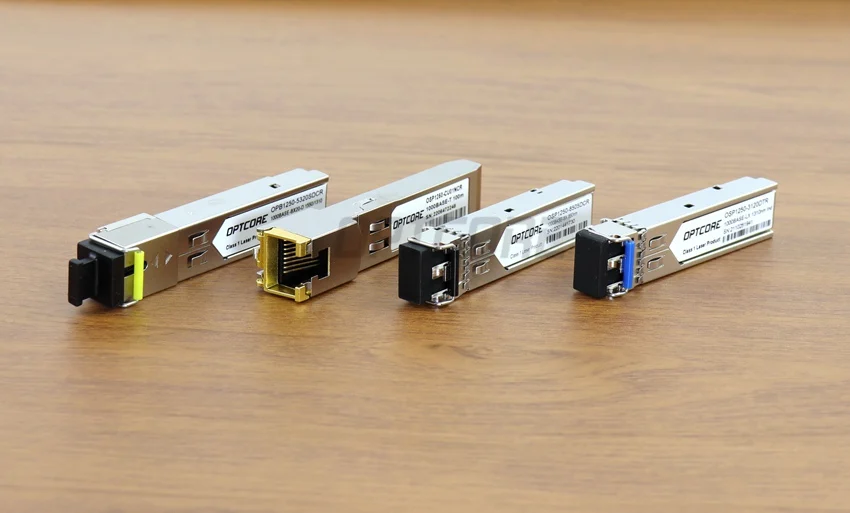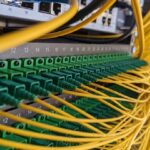In today’s fast-paced digital landscape, efficient networking is more crucial than ever. As businesses and individuals demand faster connections and higher bandwidths, the components that facilitate these needs have evolved significantly. Enter SFP modules—small but mighty players in modern networking solutions. These compact devices enable seamless communication between various network elements, enhancing performance while maintaining flexibility.
Whether you’re setting up a new office network or expanding an existing infrastructure, understanding SFP modules can make all the difference. They offer not just connectivity but also adaptability to different technologies and distances. With their vital role in today’s networks, let’s delve deeper into what makes SFP modules indispensable for any networking solution.
Benefits of using SFP Modules in Networking Solutions
SFP modules offer remarkable flexibility in networking solutions. Their compact size allows for a more efficient use of space within network equipment, making them ideal for data centers and crowded server rooms.
One key advantage is the ability to support various types of media. Whether you’re using fiber optic or copper cabling, SFP modules can easily adapt to your needs. This versatility simplifies upgrades and expansions without requiring complete hardware overhauls.
Moreover, SFP modules enable hot-swapping capabilities. You can replace or upgrade these units without interrupting your network operations—a critical feature for businesses that rely on constant connectivity.
Cost efficiency is another benefit worth noting. With their modular design, organizations can save money by only replacing individual components instead of entire systems when scaling up or down. This makes managing budgets much easier while ensuring optimal performance at all times.
Types of SFP Modules and Their Uses
SFP modules come in various types, each tailored for specific networking needs. The most common are the standard SFPs designed for Gigabit Ethernet applications. These offer reliable data transmission over short distances.
For longer ranges, you can opt for SFP+ modules. They support higher speeds and can handle 10 Gbps connections. This makes them perfect for data centers that require robust performance.
Then there are the optical SFP modules, which utilize fiber optics to transmit signals over vast distances without losing quality. They’re essential for organizations with extensive networks spread across large geographical areas.
Copper SFP modules serve another purpose; they allow connections using twisted-pair cables, ideal for shorter links within a building or campus environment.
There’s also an increasing trend toward compatibility with advanced technologies like DWDM (Dense Wavelength Division Multiplexing), allowing more data on existing fibers by utilizing different wavelengths of light simultaneously.
How to Choose the Right SFP Module for Your Network
Choosing the right SFP module for your network requires careful consideration of several factors. First, assess your bandwidth needs. Different modules support varying data rates, so identify the speed that best suits your application.
Next, consider the distance between devices. SFP modules come in short-range and long-range options. Ensure you select one compatible with the physical distance to maintain signal integrity.
Compatibility is crucial too. Check if your networking equipment supports specific SFP types or brands. This prevents potential issues during installation.
Opt for a reliable manufacturer when making a purchase. Quality can significantly impact performance and longevity.
Think about future scalability. Investing in versatile modules can facilitate easy upgrades as network demands grow over time without requiring complete system replacements.
Installation and Maintenance Tips for SFP Modules
When installing SFP modules, ensure that you handle them with care. Always grasp the module by its edges to avoid damaging any sensitive components. This simple step can save you from potential connectivity issues down the line.
Before insertion, check your network equipment’s specifications. Compatibility is crucial for optimal performance. Mismatched interfaces could lead to frustrating outages or degraded speeds.
During installation, gently slide the SFP module into its port until it clicks securely in place. Avoid using excessive force; this can result in physical damage both to the module and the device itself.
Regular maintenance is just as vital as proper installation. Periodically inspect the modules for dust or debris accumulation on connectors. A clean connection promotes better signal quality and reduces transmission errors.
Monitoring temperatures around your SFP modules helps prevent overheating—a common issue that can cause unexpected failures or reduced lifespan of these components.
Cost Comparison: SFP Modules vs Traditional Networking Solutions
When considering networking solutions, cost is a crucial factor. SFP modules often present an attractive financial option compared to traditional methods. Their modular design allows for flexibility and scalability, reducing the need for extensive hardware upgrades.
In contrast, traditional networking systems usually require significant upfront investment in proprietary equipment. This can lead to higher maintenance costs over time as technology evolves.
Moreover, SFP modules support various applications without needing entirely new setups. This adaptability translates into long-term savings that many organizations appreciate.
Additionally, the availability of third-party SFP modules makes them a budget-friendly choice. Businesses can find compatible options at lower prices than brand-specific parts while still maintaining performance standards.
The initial purchase price is just one aspect of overall network expenditure; operational efficiency plays a vital role in determining true value over time.
The Future of SFP Modules in Networking Technology
The future of SFP modules looks promising as networking demands continue to evolve. With the rise of high-speed internet and data-intensive applications, these compact devices are becoming essential.
Advancements in technology will likely lead to even higher data transfer rates. This means that newer generations of SFP modules could support speeds beyond 100 Gbps, transforming network capabilities.
Moreover, the integration of AI and machine learning into networking systems may enhance performance monitoring and fault detection for SFP modules. This ensures reliable connectivity with minimal downtime.
Sustainability is also a key consideration moving forward. Manufacturers are exploring eco-friendly materials and energy-efficient designs that align with global environmental goals.
As businesses increasingly shift towards cloud computing, the demand for versatile and scalable solutions like SFP modules will grow. Their adaptability makes them ideal for modern network architectures, fostering innovation across industries.
Conclusion
SFP modules have become indispensable in modern networking solutions. Their versatility and efficiency cater to the dynamic demands of today’s digital landscape. With various types available, choosing the right SFP module can significantly enhance network performance.
Proper installation and maintenance practices are crucial for maximizing their lifespan. Additionally, when compared to traditional networking solutions, SFP modules often provide a more cost-effective approach without compromising on quality or speed.
As technology continues to evolve, so does the role of SFP modules within networking infrastructure. They are poised to remain a key player in future advancements, ensuring that networks can adapt and grow seamlessly as requirements change.
Embracing these components will not only streamline operations but also empower organizations to meet the challenges of tomorrow head-on. The journey with SFP modules is just beginning; they represent a critical step forward into an increasingly connected world where reliability and speed matter more than ever before.


